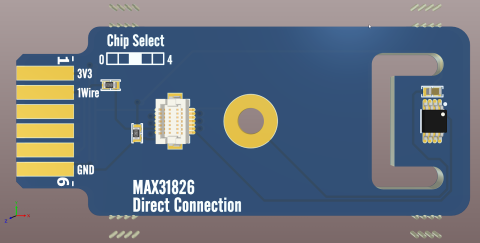Creepage and Clearance Design Rules Require More Than Integrated Flow
Occasionally, I get to drive through the Pacific Northwest on a clear day. Unencumbered by rain clouds, the mountain ranges are visible. So visible that I feel I could reach out and touch them. If I could fly the line of sight, I could be at the top of any mountain quickly. Since I can’t fly, driving my car along a twisting mountain highway would get me there on a longer route.
So it is with PCB creepage and clearance design rules on a printed circuit board. The shortest distance between two conductors, be they hole edges or heat sink perimeters, is directly through space. On the other hand, moving along the insulated surface of a printed circuit board, around components, from one conductor to the next, is a longer route - this is creepage.
PCB creepage and clearance design rules become important to safety standards when designing power circuits with minimum node potentials of 30 VAC, or 60 VDC. With those node potentials or higher, power can arc across space causing catastrophic damage or death. To avoid catastrophe, safety rules exist specifying enough distance between conductors in high power designs, both directly and via twisting routes along the board surface. PCB layout tools have long had integrated rule managers for creepage and clearance requirements to design for safety.
Rules Templates Fail to Migrate and Work Is Lost
You can imagine my surprise when using the latest and greatest layout tool update when I found out that the new integrated flow manager doesn’t include commands to set up clearance and creepage. Looking for a workaround, there wasn’t a way to add any type of general clearance option, nor was there possibility for adding a rule for board edge clearance. Importing a template for a previous project resulted in unresolvable errors.
Generating a template listing respective nodes and vias for application of clearance and creepage is practice in layout design for high power. Frequently templates for safety rules are kept for re-use from layout to layout, as the rules are the same and specified under IPC2221A, UL61010-1, and UL60950-1. These specifications apply to all conductors on the printed circuit board that carry high power.
Power circuits require safety rule application for clearance and creepage
My layout software that has left out the ability to include clearance and creepage rules. The new integrated flow manager doesn’t allow set up of rules to meet safety guidelines, leaving no way to add so much as a constraint rule. Not only do I get errors when I try to import my existing safety rule template, I can’t add anything to the general clearance option as a workaround.
Unknown Tool Behavior Leaves Template Bereft of Support
While trying to resolve the errors generated by importing the safety rule template, I found there are no commands available to move forward with the template. Digging into pulldowns and available commands, I sunk more time into resolving error messages. Further research led to the discovery that the layout tool developers left out the ability to include clearance and creepage rules.
Leaving out commonly used tools to implement frequently used keepout rules to address safety for power circuits is troubling. If the new integrated flow manager left out the ability for this commonly-used rule, what other features have they dropped? I’m not looking forward to finding other oversights within the new tool.
I talked to my colleagues and I’m told that a new Beta version is out and if I update to the newer version, I’ll have clearance and creepage commands available once again. Looking at my deliverable schedule, I worry about meeting the project’s goals for release. I’m beginning to wish I had a layout tool I could trust, with truly integrated features.
Portable Design Rules Maintain Usable Rules Templates
It would be nice if useful and required features for layout migrated with tool updates. And it would be nice to refine the rules from project to project. Being able to set up the layout at the beginning of the project would release worry about details and the layout could proceed.
Having readily accessible commands easy to use in resolving errors during the migration would allow clean setup. Placing components and traces with visible clues showing that rules are being applied would build my confidence in the tool.
Set up safety rules for clearance and creepage in one place with Altium’s editor
Illustration of rules for nodes of interest, along with competing constraints, could be considered using hierarchy within the generated rules matrix. Being able to organize the clearance and creepage rules in a hierarchy ensures that any contentions between rules with respect to nodes would be resolved.
Rule application starting in early stages of the design from board outline and layer stack restrictions to continue forward as components and traces are included with the design’s progression is ideal. Thankfully, Altium Designer® has all these features in mind with their software features.
Altium 18 has tools to set up rules and their hierarchies in a matrix. The matrix is set up using the PCB Design Rules Reference. A design rule wizard adds and edits rules to the Clearance Matrix. Once the design is completed, Design Rule Checking is available for a final check. In addition, design rule checking is applied real time throughout the layout, resolving contentions as you go, so there are no messy surprises at the end of the job.
No longer do I have to wait for last-minute workarounds and software updating to find the solutions I need in order to address the problems my designs face. My layout software can finally exceed my expectations and my deliverable schedule will be met.
If you’d like to know more, talk to an Altium Expert to discuss next steps.


















